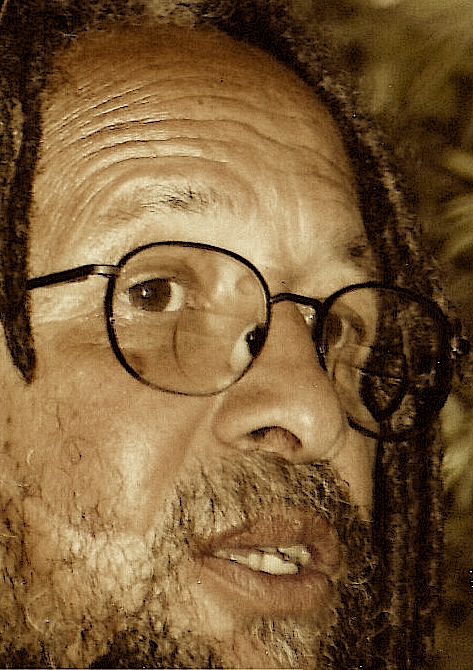|
|
AMERICA'S LINGERING DISEASE
August 13 , 2009
Some weeks ago, a friend from the east coast emailed to ask me my thoughts on the Henry Louis Gates incident. Mr. Gates, you may remember, was the well-known African-American Harvard professor who was arrested by a Cambridge, Massachusetts police officer after Mr. Gates was forced to break into his own home.
At the time, I told my friend that I had not yet formed an opinion because Mr. Gates had not yet made any public comment on the arrest. Of course, that didn’t stop many others from chiming in, on the blogsphere, in newspaper columns, on the 24-hour cable news networks, and in extended television commentary. And that, of course, is the major problem faced in this era of light-speed community discussion. The debate begins long before more than the initial facts are in, positions are taken and hardened, and partisans tend to cull each new set of disclosures less to get at the truth of the matter, more to find something to confirm the conclusions they have previously reached and firmly espoused.
One is compelled to follow the herd in this manner because if you wait for the facts to come in, the discussion has long since ended, and if you raise the issue again, you will be met with arched eyebrows and dismissive comments of “why’re you still talking about that?” If we wonder why—in the midst of an explosion of information access—we remain a backwards and ignorant nation in many respects, continually prone to entrap ourselves in our old prejudices, look to this quicksilver public discussion phenomenon as one of the culprits.
For a time, the Gates controversy served as a sort of proxy discussion about the nature of race in America post-Obama election, as citizens and commentators poured through and parsed the police reports and public statements of the principles. Two rational conclusions can emerge. The first is that the Cambridge police were perfectly prudent and proper to have responded to the initial 9-11 call that two men appeared to be breaking into a Cambridge house (Mr. Gates, if you remember, had returned home after a trip to find that his front door was stuck closed, and so he and a friend had to force it open; the individual who made the 9-11 call worked in a nearby office, was not an acquaintance of Mr. Gates, and did not know that he was the homeowner). The second conclusion is that unless Mr. Gates assaulted or threatened the intervening police officers—which he probably didn’t, since if he had, that would have been included in the police statement—the officers should have left the house without arresting Mr. Gates once it was determined that Mr. Gates was the owner of the house.
But beyond that, little can be gained of any lasting public value by determining who was right, and who was wrong, in the arrest of Mr. Gates. The problem is that both Mr. Gates and James Crowley, the arresting officer, had a vested interest in shading their respective accounts of the encounter, each to place the blame on the other, and unless one knew either or both of the individuals prior to the encounter, it would be impossible to make anything more than a guess at which of the two accounts might be the more truthful. In addition, there is the normal phenomenon that two individuals can witness—or participate in—the same event and honestly view and recount it in vastly different ways.
Finally, there is the provision in civil law of contributory negligence—that while one individual can be largely responsible for an event, the opponent’s negligent acts can also contribute, to some degree or another, to the bad outcome. My guess is that the Gates-Crowley affair falls somewhere in this region, though which man would stand more or less to blame in the matter is, well, anybody’s guess.
That’s what makes the Gates-Crowley affair a particularly poor example in trying to judge whether so-called “successful” African-Americans still face prejudice in America, which was what made the Gates arrest so compelling and much-debated a subject.
Some years ago, I explored that subject in a cover article while I was a reporter with Metro alternative weekly newspaper in San Jose. “In Living Color”) was written in response to the infamous incident in which the well-known and popular actor Danny Glove was unable to secure a cab in New York because of his color. While the interviews for “In Living Color” were done nine years ago, they have more applicability to the subject than anything that can be gleaned from the Gates or Crowley statements. None of the individuals I interviewed approached me with their stories, and unlike Mr. Gates or Mr. Crowley, none of them stood anything to lose or gain from the information they revealed. All were successful in their various fields of endeavor, and had no excuses to make. And all came to the same conclusion, that being successful did not shield them from continuing racism and prejudice.
Some excerpts from their stories:
“One time I was walking along at [Stanford] hospital, I've got my lab coat on, the usual hospital scrubs, white coat and scrubs. The only people around here who wear white coats and scrubs are the doctors and the residents. Housekeeping has a very different kind of uniform. I'm walking along and hear this voice that says, ‘Excuse me.’ And I turn around, and there's this elderly Caucasian woman in her bed, and she goes, ‘Could you empty the trash?’ I thought about it, and part of me was going, ‘Yeah, right,’ but I thought maybe she's confused, so I went and emptied her trash. I'm not above that. And later one of the nurses went in and asked her, ‘Why was the neurosurgeon emptying your trash?’”
Gary Height, neurosurgeon, Stanford Medical Center
“There's also the kind of situation of ‘driving while black.’ You hear a million stories about that, mainly in Palo Alto. It's not just driving while black, it's driving while black and not driving a late model car. If you've got a car that's a couple of years old, you never get stopped. But when I first moved to Palo Alto, I was living in a very nice part of town, renting, and I made a left turn (I call this ‘making a left turn into a white neighborhood’), and I got pulled over by a cop. I had my registration and everything and showed I lived about three blocks away from where I was going and after the cop looks at all this he says, ‘Well, it looked like you went through the light and it had already turned yellow, and this is my first day back from vacation, so I'm not giving anyone a ticket.’ … I was allowed to go because I could prove I belonged there, but the presumption was that I didn't.”
Margalynne Armstrong, Associate Professor, Santa Clara University Law School
“I don’t often go to department stores, and that is in large part because it wasn't that many years ago when I would go to department stores and was followed, and it was obvious, and I got sick of it. … When I was looking for a home to buy in Palo Alto, this was about 10 years ago, I became very frustrated because the racism was just so blatant. I remember one instance I went to a home where a ‘For Sale’ sign was up and the person who answered the door was either a manager and/or a tenant there, and I was told, immediately, that there was nothing available. And, of course, I checked, and it actually was available... During that same period, I went to one house where I was followed by the Realtor. She followed me everywhere, upstairs and downstairs. It was an open house, and there were a lot of other people there. The Realtor inquired what I was doing there and told me that this house was not for rent, it was for sale. The assumption was that I could not have been interested in buying a house.”
LaDoris Cordell, Santa Clara County Superior Court Judge
"[I was in Washington D.C. one night trying to catch a cab around midnight after a movie.] I had on a suit, tie, and dressed as I normally am. I noticed that the cabs were circling and some of them were not stopping, they'd simply go around the circle and come back again. They weren't passing up families. They weren't passing up individuals who were white. But they were passing up individual black males. … I just stood there patiently and finally worked my way to the front, and I was at the front of the line and a cab drove up. I got to the front of the line, cab pulls up to let somebody out, I walk over, put my hand on the back door to get in, he pulls away. So I backed up quickly, and then the next cab pulls around, and the guy stopped and I got in. I said, 'What the hell's going on here, with cabs pulling up and then pulling away?' This was a guy who was a black man from Ethiopia or from someplace, and he said, 'It's your color.' And I said, 'What do you mean, it's my color? They're black.' Meaning the cab drivers. He said, 'Yeah, but they're afraid.'”
Ward Connerly (yes, friends, that Ward Connerly)
The incidents described here are minor in import. A Black neurosurgeon mistaken for an orderly, a law professor stopped briefly by police for turning her car into a white neighborhood, a Superior Court judge followed around by security in a department store or assumed by a realtor to be unable to purchase a home, a University of California regent unable to catch a cab. No-one was shot. No-one was jailed. None of these incidents made the news, except in the form of the interviews I did for the articles. While the individuals involved were disturbed by the various incidents, they were not overwhelmed, and did not allow them to become barriers to their success.
And so, there will be the temptation for some to dismiss these as aberrations, throwbacks to the old prejudiced times that the nation has since outgrown, residue, like the smell of burnt toast that remains in the air long after the garbage has been thrown out.
But to dismiss these incidents as aberrations would be a mistake. They are symptoms of the long-term American disease of anti-Black racism that waxes and wanes and at times may appear to go into remission, but has not yet been cured and, so, is always in danger of flaring up again, full-blown.
Always it lingers. Once the nation broke in half over the issue, more than once it has gone up in flames. Now we see once more, in some of the ugly mutterings surrounding the first days of an African-American president—the passed-around images of Mr. Obama in jungle dress and a bone in his nose, of watermelons growing on the White House lawn, Facebook comments from a Southern Republican election official that an escaped zoo gorilla was an ancestor of Ms. Obama—in these things we see a threat for America’s old sickness to come out roaring, again.
|

